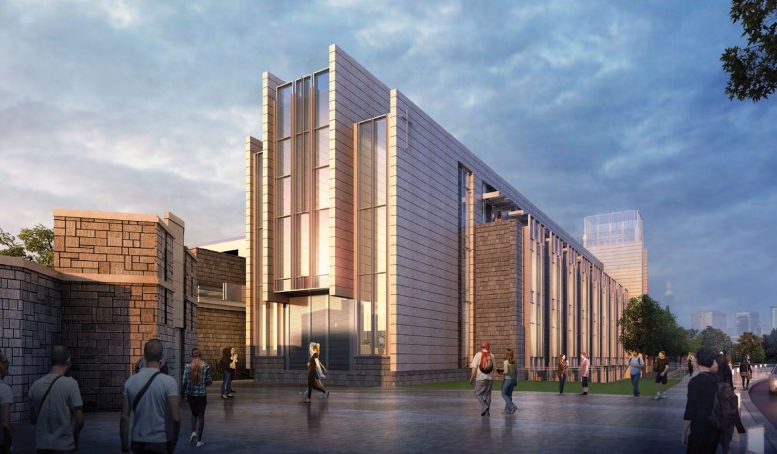Audrey Strauss, the United States Attorney for the Southern District of New York, William F. Sweeney Jr., Assistant Director-in-Charge of the New York Office of the Federal Bureau of Investigation (“FBI”), and Margaret Garnett, Commissioner of the New York City Department of Investigation (“DOI”), announced the unsealing of indictments charging nine current and former employees and officers of the New York City Department of Correction with taking cash bribes in return for smuggling contraband such as scalpels, razor blades, drugs, alcohol, and cellphones to inmates in New York City area jails. Nine defendants were arrested today and will be presented before United States Magistrate Judges. Seven defendants were arrested in New York, one defendant in Pennsylvania, and one defendant in Virginia.
U.S. Attorney Audrey Strauss said: “These defendants were responsible for maintaining a safe and orderly environment in New York City’s jails. Instead, as alleged, they abused their positions to enrich themselves by smuggling weapons, drugs, and other dangerous contraband in return for thousands of dollars of cash bribes. This alleged activity violated the defendants’ duties, and endangered the inmates they were charged to supervise and guard.”
FBI Assistant Director William F. Sweeney Jr. said: “The nine defendants charged today risked the safety and security of their colleagues and others within the New York City Department of Correction when they carelessly decided to smuggle contraband into our jails, as we allege today. We shouldn’t have to remind public servants that accepting bribes while conducting illegal activity could constitute a federal crime, but when necessary, that’s exactly what we’ll do.”
DOI Commissioner Margaret Garnett said: “These charged crimes involving contraband smuggling and bribery by City Correction officers and employees reflect the pernicious and damaging impact of corruption. Correction officers and staff should protect the integrity of the jails, not promote lawlessness and violence by accepting bribes in return for trafficking drugs, scalpels, razor blades, cell phones, and other contraband – all highly valued, illegal items that undermine order in the jails and compromise the safety of other correction officers and inmates. DOI thanks the FBI and the U.S. Attorney’s Office for the Southern District of New York for their partnership on these significant investigations.”
According to the allegations in the Indictments[1] unsealed today:
MIGUEL COMPRES, 35, of New York, New York, abused his position as a correction officer to smuggle scalpels, smokable synthetic cannabinoids, often referred to as “K2” or “Spice,” cellphones, and large quantities of cigarettes into the Manhattan Detention Complex in downtown Manhattan, in return for over $6,000 in bribes, from at least in or about November 2019 up through and including in or about August 2020. He is charged with one count of conspiracy to commit federal crimes, which carries a maximum sentence of five years in prison, one count of federal program bribery, which carries a maximum sentence of 10 years in prison, and one count of honest services wire fraud, which carries a maximum sentence of 20 years in prison.
TAMEKA LEWIS, 41, of Brooklyn, New York, abused her position as a counselor with the Department of Correction to smuggle K2 and other contraband into the Otis Bantum Correctional Center on Rikers Island, in return for over $40,000 in bribes, from at least in or about June 2019 up through and including in or about September 2020. She is charged with one count of conspiracy to commit federal crimes, which carries a maximum sentence of five years in prison, one count of federal program bribery, which carries a maximum sentence of 10 years in prison, one count of honest services wire fraud, which carries a maximum sentence of 20 years in prison, and one count of distribution of a controlled substances analogue, which carries a maximum sentence of 20 years in prison.
DARIEL DIAZ, 33, of Reading, Pennsylvania, abused his position as a correction officer to smuggle K2, a cellphone, and large quantities of cigarettes into the George R. Vierno Center on Rikers Island, in return for over $8,000 in bribes, from at least in or about March 2020 up through and including in or about September 2020. He is charged with one count of conspiracy to commit federal crimes, which carries a maximum sentence of five years in prison, one count of federal program bribery, which carries a maximum sentence of 10 years in prison, and one count of honest services wire fraud, which carries a maximum sentence of 20 years in prison.
JASMINE REED, 34, of Norfolk, Virginia, abused her position as an exterminator with the Department of Correction to smuggle a razor, K2, marijuana, cigarettes, a cellphone, and other contraband into the Manhattan Detention Complex in downtown Manhattan in return for cash bribes, from at least in or about September 2019 up through and including in or about December 2019. She is charged with one count of conspiracy to commit federal crimes, which carries a maximum sentence of five years in prison, one count of honest services wire fraud, which carries a maximum sentence of 20 years in prison, and one count of distribution of a controlled substance, which carries a maximum sentence of 20 years in prison.
TEMAINE PELZER, 45, of Brooklyn, New York, abused his position as a correction officer to smuggle cigarettes and other contraband into the Manhattan Detention Complex, in return for over $8,000 in bribes, from at least in or about August 2019 up through and including in or about February 2020. He is charged with one count of conspiracy to commit federal crimes, which carries a maximum sentence of five years in prison, one count of federal program bribery, which carries a maximum sentence of 10 years in prison, and one count of honest services wire fraud, which carries a maximum sentence of 20 years in prison.
BRIAN HARRELL, 60, of Pelham, New York, abused his position as a correction officer to smuggle K2, alcohol, cigarettes, and other contraband into the Manhattan Detention Complex, in return for over $6,500 in bribes, from at least in or about May 2020 up through and including in or about June 2020. He is charged with one count of conspiracy to commit federal crimes, which carries a maximum sentence of five years in prison, one count of federal program bribery, which carries a maximum sentence of 10 years in prison, one count of honest services wire fraud, which carries a maximum sentence of 20 years in prison, and one count of distribution of a controlled substances analogue, which carries a maximum sentence of 20 years in prison.
RASHAWN ASSANAH, 25, of Queens, New York, abused his position as a correction officer to smuggle a cellphone, a large quantity of cigarettes, and other contraband into the Robert N. Davoren Center on Rikers Island, in return for over $7,500 in bribes, from at least in or about November 2020 up through and including in or about February 2021. He is charged with one count of conspiracy to commit federal crimes, which carries a maximum sentence of five years in prison, one count of federal program bribery, which carries a maximum sentence of 10 years in prison, and one count of honest services wire fraud, which carries a maximum sentence of 20 years in prison.
ROBERT BALDUCCI, 33, of the Bronx, New York, abused his position as a correction officer to smuggle razor blades, marijuana, and other contraband into the Otis Bantum Correctional Center on Rikers Island, in return for at least $5,000 in bribes, in or about October 2020. He is charged with one count of conspiracy to commit federal crimes, which carries a maximum sentence of five years in prison, one count of federal program bribery, which carries a maximum sentence of 10 years in prison, and one count of honest services wire fraud, which carries a maximum sentence of 20 years in prison.
JOHNATHAN GARRETT, 32, of Brooklyn, New York, abused his position as a correction officer to smuggle methamphetamine, K2, and other contraband into the Anna M. Kross Center on Rikers Island, in return for at least $5,000 in bribes, from at least in or about September 2020 up through and including in or about October 2020. He is charged with one count of conspiracy to commit federal crimes, which carries a maximum sentence of five years in prison, one count of federal program bribery, which carries a maximum sentence of 10 years in prison, and one count of honest services wire fraud, which carries a maximum sentence of 20 years in prison.
The maximum potential sentences in these cases are prescribed by Congress and are provided here for informational purposes only, as any sentencing of each defendant will be determined by the judge.
Ms. Strauss praised the outstanding investigative work of the FBI and DOI.
The charges in the Indictments are merely accusations and the defendants are presumed innocent unless and until proven guilty.
[1] As the introductory phrase signifies, the entirety of the text of the Indictments and the description of the Indictments set forth herein constitute only allegations, and every fact described should be treated as an allegation.














